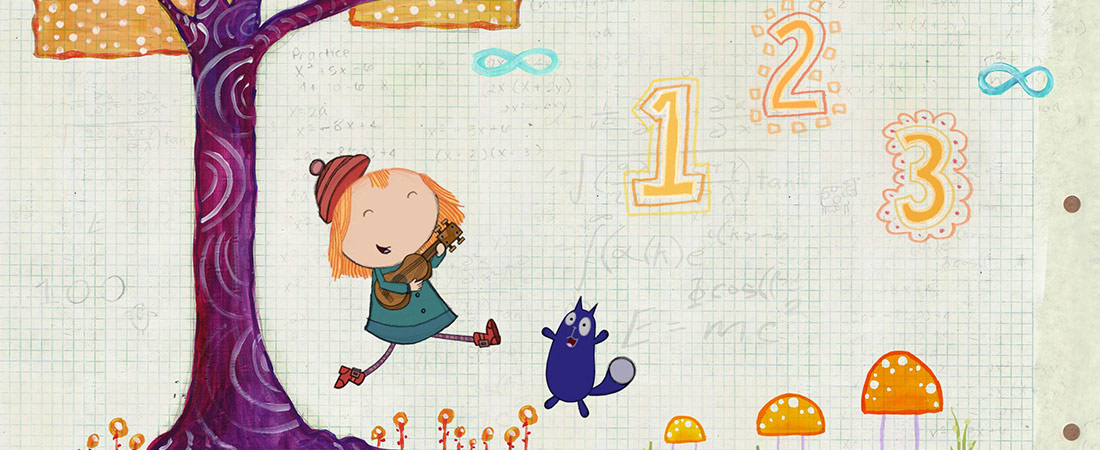Watching and Learning Together

An image from PEG+CAT, courtesy of PBS KIDS
Many parents use educational television shows to both entertain and educate their young children. But according to a new research study from EDC and SRI International, the biggest gains can occur when parents join their children in watching, using, and discussing educational media.
“Sometimes parents think that when they put on an educational show, that’s their cue to leave the room,” says EDC’s Shelley Pasnik, a national expert on technology and learning and co-author of the study. “But really that should be their cue to stay.”
The study was part of an evaluation of PEG+CAT, a PBS KIDS transmedia program that fosters preschool students’ mathematical thinking. Transmedia programs allow children to follow the same characters and narratives across television shows, mobile apps, and digital games, creating a coherent learning experience. Funding for PEG+CAT, as well as for the study, was provided by the CPB-PBS Ready to Learn (RTL) Initiative, which creates educational programming and outreach activities for local public media stations and their communities.
The study, led by Pasnik and SRI International’s Carlin Llorente, included 197 children and their parents and caregivers from low-income communities in New York City and the San Francisco Bay area. Half the families were given an Android tablet and a Chromebook laptop that gave them access to PEG+CAT materials on multiple devices, including video clips, online games, a tablet-based app, and print activities. Parents were also sent regular text messages reminding them to engage with PEG+CAT resources with their children. The other half of the families did not make any changes to their children’s regular technology use.
Researchers found that family engagement with the PEG+CAT materials made a difference for both children and their parents and caregivers. Specifically:
- Children who used the materials showed statistically significant improvement in critical math areas involving ordinal numbers, spatial relationships, and 3-D shapes when compared to children in the control group.
- Adults who used the materials reported developing greater confidence and skills to help their children make sense of the mathematical ideas in PEG+CAT. They also reported an increase in shared media use and in conversations connecting digital media and daily life.
These were important findings for Pasnik, who has long believed that well-designed educational media is only one part of creating meaningful learning experiences for children.
“You want the digital content to be strong, but you also want it to make the case for social interaction,” she says. “Conversations are incredibly important for preschoolers.”
Pamela Johnson, executive director of the RTL program at the Corporation for Public Broadcasting, says that the study reveals the power of transmedia programs to help children learn.
“PEG+CAT stands on its own as a pioneering, award-winning early math program,” she says. “We’re proud to know that PEG+CAT can have this kind of significant impact on children and families—especially those from low-income households. This has important implications for addressing the achievement gap for children most in need.”
The next round of RTL material development will focus on science education and literacy, and will apply lessons learned from the PEG+CAT study.
“We learned a lot about the importance of family engagement through this work,” says Johnson. “We want to continue to build programs that help parents support their children, especially parents who may not feel comfortable guiding their children with academic knowledge and skill.”
Pasnik also believes that this study makes an important contribution to understanding young children’s engagement with media.
“We’re still defining what best practices are with digital media,” says Pasnik. “Sometimes, we focus too much on the media itself and not enough on the social interactions surrounding it. This study shows that you miss learning opportunities if you do that.”